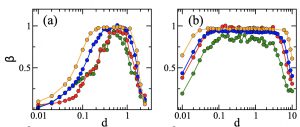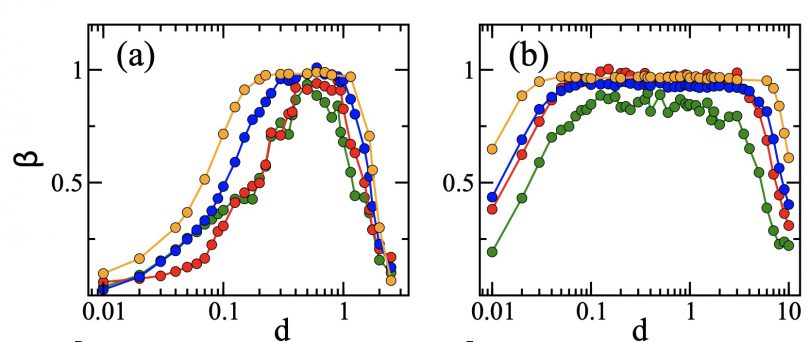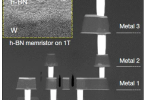Quantum Chaos is a very interesting and timing field of research. Determining what are the characteristics of a system that lead to chaos is an important question to solve. Our member, Franciso Pérez-Bernal, has published an interesting paper addressing this question in Physical Review Research.
In this paper, the authors study several quantum Hamiltonians as s=1/2 Ising model in a transverse field (left panel in the figure) and s=1 Lai-Sutherland models (right panel in the figure). They place a small purity of amplitude ‘d’ in the middle of the chain as a way of breaking symmetries and integrability and to study the emergence of chaos. They calculate a chaos indicator as a function of the impurity amplitude, ‘d’, as it is displayed in the following figure:

As it is clear from the plot the systems present chaos for a broad range of the parameter even if the perturbation is only local. Each colour represents a different size, being green L=10 (L=7) and yellow L=16 (L=10) for the Ising (Lai-Sutherland) model. It is clear that even if the perturbation os local the effect is more important the larger the system is. Therefore, the authors show that a local perturbation applied to a single site can be enough for the onset of chaos. The important effects produced by such small changes to a Hamiltonian calls for the quest of indicators that can detect chaos in the presence of symmetries. The authors in this work pay heed to the correlation hole and the distribution of off-diagonal elements of local observables.
This discovery can lead to new methods to the identification of symmetry subspaces and in the search of new chaotic and integrable models.
Ref: Lea F. Santos, Francisco Pérez-Bernal, and E. Jonathan Torres-Herrera. Speck of chaos. Phys. Rev. Res. 2, 043034 (2020).








